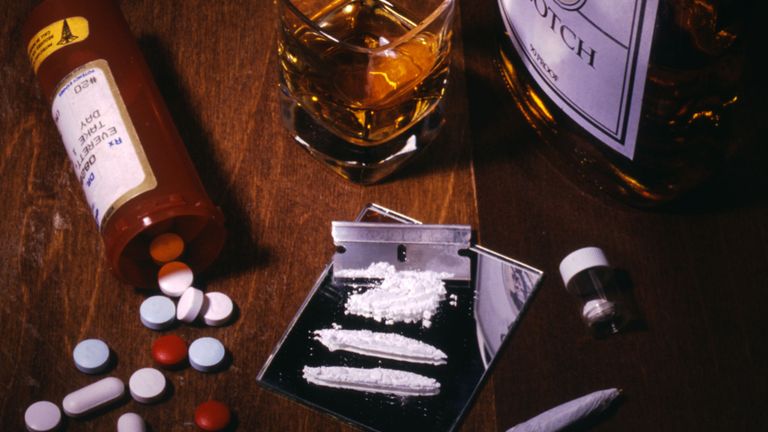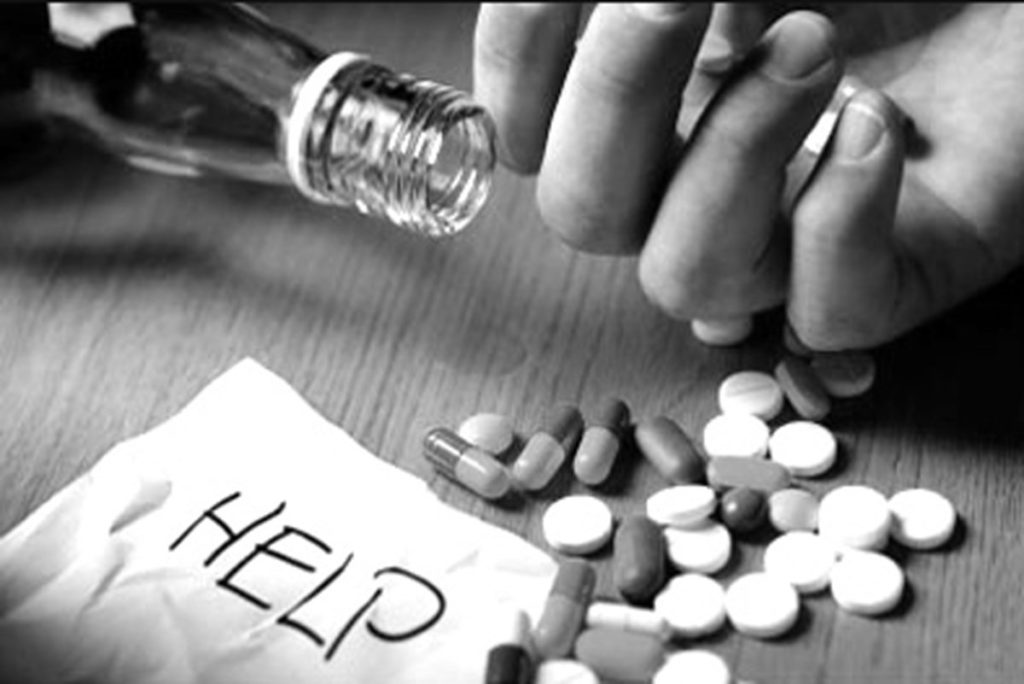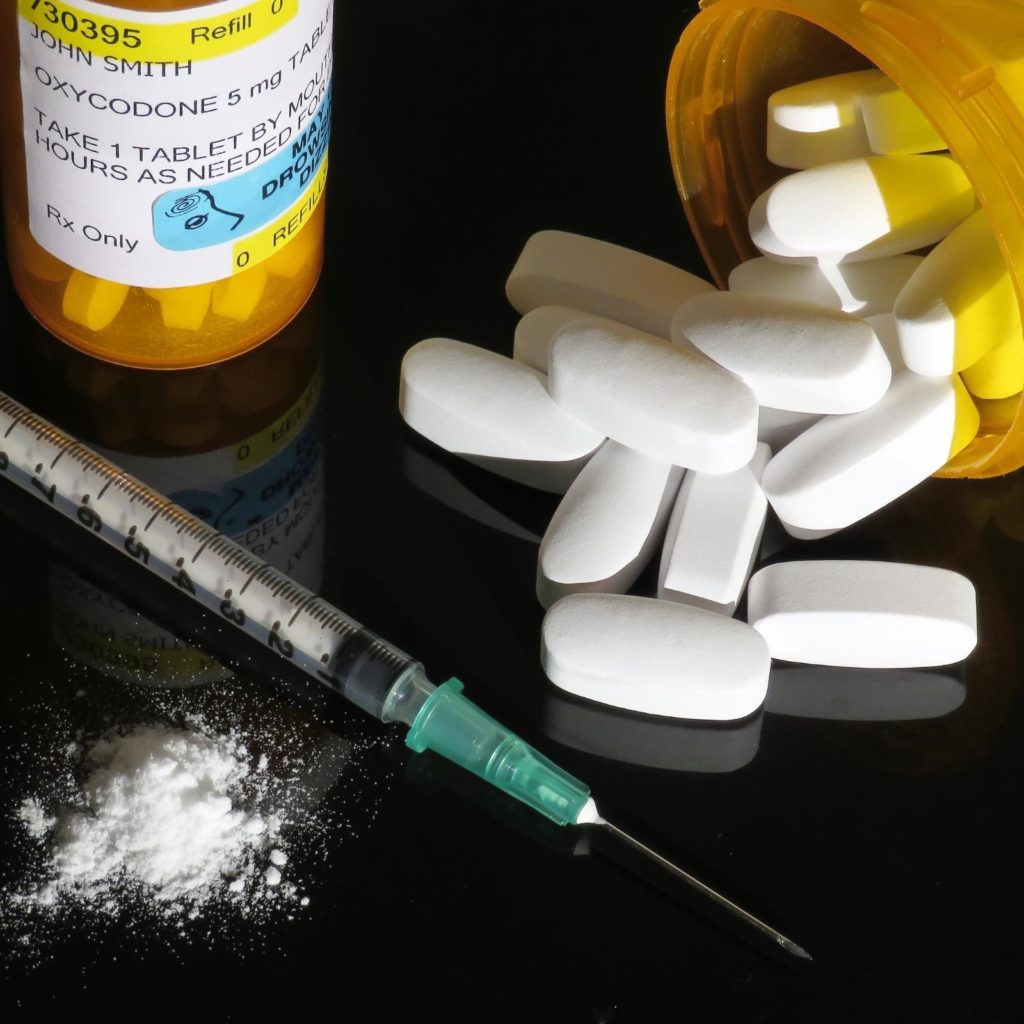Morphine Overdose
Morphine is perhaps the most well-known pain deterrent in the world. Derived from the opium poppy plant, this opiate medication has been used to treat chronic pain for hundreds of years. Its pain-relieving effects can last for upward of seven hours, making it the preferred choice for many procedures from labor pains to severe heart-and-respiratory complications. Researchers and physicians use morphine as the benchmark by which they measure and study other opioids.
Illicit abuse of morphine is common. It can be used to achieve a high in large doses. Morphine can be chemically transformed into heroin. Among their many similarities, morphine and heroin are believed to have the same potential for addiction. Its ability to produce one of the most euphoric highs of any opioid, prescription or otherwise, makes morphine particularly susceptible to medical misuse and recreational use.

Morphine is among the chief contributors to the opioid epidemic sweeping across the United States. The capacity to abuse the medicine is high, as is also the case for its offshoot drugs like heroin and oxycodone. There is no question that morphine has a vital role in the field of medicine but, when misused, the medicine has the potential to produce life-threatening symptoms and cause overdose deaths.
It is possible to overdose on morphine. Because morphine use is so common in hospitals, many people are curious as to whether it’s possible to overdose on the drug. Highly trained medical staff administer morphine to their patients. However, the safety of using morphine diminishes as the legality does — meaning unlawful uses make overdose deaths a reality.
More than 4,000 people lost their lives to morphine overdoses in 2014. Overdoses from heroin are generally a more common occurrence, but it can be difficult to differentiate between the two. Heroin metabolizes into morphine to bind to receptors in the brain. Thus, some morphine overdoses can be mistaken for heroin overdoses. Morphine overdoses are a possibility if the proper precautions are not taken. The amount it takes to overdose might not be what you’d expect.
Why Is Morphine Dangerous?
Morphine is strong pain-relief medicine and can cause life-threatening breathing problems. People who take morphine may become reliant on this medicine if they take it regularly, even after a short period. People can also develop tolerance if they take morphine — this means they need to take larger amounts of the opioid to get the same effect. However, as the dosage increases, so does the risk of side effects.
If you stop taking morphine suddenly, you may experience withdrawal symptoms. Morphine may make it difficult for you to drive or operate heavy machinery. If you have recently started taking an opioid medication or changed the dosage, you may be at higher risk of having an accident. If you have kidney problems or your kidney function is impaired, your doctor will need to adjust your dosage of morphine.
Other factors may limit your use of morphine — for example, if you drink alcohol or take other medicines that can cause drowsiness. Your doctor is the best person to advise you on whether morphine is the right medicine for you, how much you need, and how long to take it. If a person is not breathing, or if they are unresponsive, seek help straight away. Call triple zero (000) and ask for an ambulance.

Get Your Life Back
Find Hope & Recovery. Get Safe Comfortable Detox, Addiction Rehab & Dual Diagnosis High-Quality Care.
Hotline(844) 597-1011Signs of Morphine Overdose and Morphine Overdose Symptoms
Like all opioids and opiates, morphine overdose symptoms fit in three broad categories collectively known as the opioid overdose triad. The three signs to look out for in a morphine overdose include:
1) Comatose-like behavior: people may slip into a state of unconsciousness.
2) Pinpoint pupils: one or both eyes may exhibit erratic behavior or have tiny pupils that do not react to light.
3) Slower respiration rate: morphine overdoses can lead to pulmonary edema, the filling of the lungs with fluid, which is a leading cause of death for such an overdose. For this reason, monitoring breathing is essential.
More overdose warning signs that should never be ignored include limpness, the inability to speak, itching, pale skin, a bluish complexion on lips and fingernails, nausea, and confusion. Even when morphine is taken as prescribed, it can be associated with serious and sometimes life-threatening side effects within the first 1 to 3 days of taking morphine, or whenever a dose is increased.
Serious side effects of morphine overdose include agitation, changes in your heartbeat, confusion, drowsiness, extreme sleepiness, fever, hallucinations, loss of appetite, nausea, and significant changes in your mood. In addition, fainting can occur during an overdose. Less-threatening side effects of a morphine overdose can include:
- Cold or clammy skin
- Bluish fingertips and lips
- Constricted pupils
- Blurred vision
- Vomiting
- Severe constipation
- Severely slowed or irregular breathing
- Limp muscles
If you or a loved one are exhibiting the signs of a morphine overdose, it’s important to access emergency medical care by calling 911 or the emergency medical service in your area right away.
How Much Morphine Is An Overdose?
Morphine is administered in two main varieties depending on the patient’s needs and opioid tolerances. These types include immediate-release and extended-release prescriptions. Each of these comes with a recommended dosage. For the immediate-release type, this amount is 15 to 30 mg every four hours. Extended-release tablets come out to a bit less — 30 mg in 24 hours — to avoid excessive or unwanted sedation.
According to medical professionals, the lethal dosage of morphine comes in at only 200 mg. However, this number can be as low as 60 mg if the patient lacks the aforementioned tolerance to morphine. This quality means that only three to four normal doses can be enough to cause an overdose.

Additionally, there are several recreational methods of misusing morphine that can lead to an overdose even faster. Many users have been known to mix morphine with depressants such as alcohol. This slows the nervous system’s ability to maintain basic bodily functions such as breathing or pumping blood to organs. Another danger resides in how morphine is used in these instances. Crushed morphine can lose its extended-release buffer, allowing for a faster, more hazardous absorption into the bloodstream.
Get Help. Get Better. Get Your Life Back.
Searching for Accredited Drug and Alcohol Rehab Centers Near You?
Even if you have failed previously and relapsed, or are in the middle of a difficult crisis, we stand ready to support you. Our trusted behavioral health specialists will not give up on you. When you feel ready or just want someone to speak to about therapy alternatives to change your life call us. Even if we cannot assist you, we will lead you to wherever you can get support. There is no obligation. Call our hotline today.
(844) 597-1011Morphine Overdose Risk Factors
Several factors can increase a person’s risk of overdosing. They include:
- Changes in tolerance from not using or using less. This happens after being in jail, detoxing, or following a period of abstinence.
- Changes in quality or purity of the illicit drug.
- Mixing morphine with alcohol or benzodiazepines (benzos). Benzos include Klonopin, Xanax, Ativan, Valium, Librium, and others.
- Mixing morphine with stimulants, such as crack/cocaine, meth, speed, and others.
- Having poor nutrition, a weak immune system, heart problems, or other health issues (i.e.HIV, Hepatitis C, unhealthy lungs from smoking, or liver damage from drinking).
- Surviving a past overdose.
Preventing Morphine Overdose
If you or someone you know has an opioid use disorder, consider using the following overdose prevention tips:
- Always use it in the company of friends or around other people.
- Use less at first, especially if you are using a new product.
- Make an overdose plan with friends or drug partners.
- Use one drug at a time.
- Use less after any period of abstinence or decreased use – even a few days away can lower your tolerance.
- Test the strength of the drug before you use the whole amount.
- Use a less risky method (for example, snort instead of injecting).
- Age and physical health matter; stay hydrated, eat regularly, and get enough sleep and rest when you feel worn down.
Morphine Overdose Death
While morphine is frequently administered in a hospital setting where patients are closely monitored, some patients have also been prescribed morphine for home use. Morphine is available as an injectable solution, extended-release capsule, immediate-release tablet, and oral solution and is intended to treat pain that is inadequately managed with non-opioid medications such as NSAIDs. Many patients who are prescribed morphine suffer from constant pain rather than the pain that comes and goes or is associated with physical activity.
And while morphine can help people suffering from chronic physical pain when used as prescribed, if it is used in excess or used by someone without legitimate pain, dependence development, addiction, and overdose are definitive risks. Morphine addiction and overdoses are on the rise in the United States according to recent reports from the Centers for Disease Control and Prevention—since 2000, the rate of opioid overdoses has increased by 200%.
In 2014, the rate of overdose deaths caused by natural and semi-synthetic opioids like morphine, oxycodone, and hydrocodone was 3.8 per 100,000. Unfortunately, many of these deaths could have been avoided had people known more about the risk factors of morphine use and the signs and symptoms of overdose.
First-class Facilities & Amenities
World-class High-Quality Addiction & Mental Health Rehabilitation Treatment
Rehab Centers TourRenowned Addiction Centers. Serene Private Facilities. Inpatient rehab programs vary.
Addiction Helpline(844) 597-1011Proven recovery success experience, backed by a Team w/ History of:
15+
Years of Unified Experience
100s
5-Star Reviews Across Our Centers
10K
Recovery Success Stories Across Our Network
- Low Patient to Therapist Ratio
- Onsite Medical Detox Center
- Comprehensive Dual-Diagnosis Treatment
- Complimentary Family & Alumni Programs
- Coaching, Recovery & Personal Development Events
Morphine Overdose Treatment
Before calling emergency, if possible, determine the following information:
- Person’s age, weight, and condition (for example, is the person awake or alert?)
- Name of the product (ingredients and strengths, if known)
- The time it was swallowed or consumed
- Amount swallowed or consumed
However, do not delay calling for help if this information is not immediately available. Your local poison control center can be reached directly by calling the national toll-free Poison Help hotline (1-800-222-1222) from anywhere in the United States. This hotline will let you talk to experts in poisoning. They will give you further instructions.
This is a free and confidential service. All local poison control centers in the United States use this national number. You should call if you have any questions about poisoning or poison prevention. It does not need to be an emergency. You can call for any reason, 24 hours a day, 7 days a week. Take the container with you to the hospital, if possible.
What to Expect in the Emergency Room?
The health care provider will measure and monitor the person’s vital signs, including temperature, pulse, breathing rate, and blood pressure.
Symptoms will be treated as appropriate. The person may receive:
- Activated charcoal
- Airway support, including oxygen, a breathing tube through the mouth (intubation), and a breathing machine (ventilator)
- Blood and urine tests
- CT (computerized axial tomography, or advanced imaging) scan of the head
- Chest x-ray
- ECG (electrocardiogram, or heart tracing)
- Fluids through a vein (IV)
- Laxative
- Medicines to treat symptoms, including naloxone, an antidote to reverse the effect of the poison; many doses may be needed
- Tube through the mouth into the stomach to wash out the stomach (gastric lavage), if unable to swallow medications
Morphine Addiction
Morphine is an Opiate used to relieve pain. Named after Morpheus, the Greek god of dreams, Morphine provides a feeling of euphoria often described as a dreamlike state. The drug can be taken in the form of a tablet, syrup, or injection. In some cases, Morphine can even be smoked.
Morphine has the potential to be highly addictive, as tolerance to it develops rapidly. A federally designated Schedule II drug, Morphine is used to treat moderate, severe, and chronic pain. It is also used for pain relief after major surgeries, treatment for cancer-related pain, and shortness of breath at the end of a patient’s life.
However, Morphine also has a high potential for abuse because of its pleasurable effects and relative accessibility. In recent years, Morphine pills have added abuse-deterrent coding so that they cannot be crushed, snorted, or injected. While this has reduced the addictive potential of prescribed Morphine, it has not eliminated the risk nor impacted illicitly manufactured Morphine.

Some of the common street or slang names for Morphine include M, Miss Emma, Monkey, Roxanol, and White Stuff. Morphine is a naturally occurring substance extracted from either the Opium poppy plant or concentrated poppy straw. Its chemical makeup is similar to Heroin, as they are both extracted from the same plant.
Addiction to Morphine develops for several reasons and is often the consequence of consistent abuse. An addiction typically begins with a tolerance — needing larger doses of Morphine to feel its effects. Once tolerance develops, users will experience withdrawal symptoms when they don’t take Morphine, making it hard to quit. In many cases, the psychological dependence on Morphine develops soon after the physical one.
Someone addicted to Morphine will compulsively look for and abuse it, ignoring the negative consequences. Morphine addiction is similar to Heroin addiction and is a very difficult addiction to overcome. Sudden withdrawal from Morphine can be extremely uncomfortable and unpleasant; therefore, a medically managed detoxification is the best way to rid the body of the substance. Contact a treatment provider to discuss available treatment options.
World-class, Accredited, 5-Star Reviewed, Effective Addiction & Mental Health Programs. Complete Behavioral Health Inpatient Rehab, Detox plus Co-occuring Disorders Therapy.
CALL(844) 597-1011End the Addiction Pain. End the Emotional Rollercoaster. Get Your Life Back. Start Drug, Alcohol & Dual Diagnosis Mental Health Treatment Now. Get Free No-obligation Guidance by Substance Abuse Specialists Who Understand Addiction & Mental Health Recovery & Know How to Help.
Signs That Someone Is Addicted to Morphine
Morphine is a highly addictive drug because of its intensely pleasurable high and propensity to lead to the development of physical dependence. Morphine users may experience some degree of physiologic drug dependence even when taking it as prescribed.
The diagnosis of morphine addiction (technically, an opioid use disorder) can be made after an individual using the drug displays at least two of the following signs:
- Using larger amounts of morphine over time.
- Difficulty cutting down.
- Spending a long time acquiring, using, or recovering from morphine.
- Urges to use more morphine.
- Failing to take care of responsibilities at home, work, or school as a result of continued morphine use.
- Continues to use morphine despite relationship problems.
- Giving up important activities because of morphine.
- Using morphine in dangerous situations.
- Continuing to use morphine despite the drug’s physical or psychological problems caused or made worse.
- Requires more morphine to achieve the same effects (i.e., tolerance).
- Going into withdrawal when not using morphine.
Other signs that a person is specifically snorting morphine as their chosen route of abuse may include:
- Frequent sniffling, runny nose, or nose rubbing.
- White powder residue on personal items.
- Paraphernalia like prescription bottles, straws, and razors.
Morphine Effects And Abuse
As a Narcotic drug, Morphine is often abused for its pleasurable effects. Those suffering from chronic pain have the potential to misuse their medication, which increases their likelihood of developing a substance use disorder.
Common effects of Morphine include:
- Euphoria
- Pain relief
- Sleepiness or unusual drowsiness
- Reduced anxiety
- False or unusual sense of well-being
- A relaxed or calm feeling
Any time someone uses Morphine without a prescription, it is considered abuse. Although it is a legal substance when prescribed, it is a heavily regulated one. Possession of Morphine without a prescription is a criminal offense, the degree of which varies based on the jurisdiction and the amount of the drug in possession.
Those who abuse Morphine in high doses put themselves at risk of overdosing. Signs of a Morphine overdose include slurred speech, inattention, intense drowsiness, fever, elevated blood pressure, increased thirst, lower back or side pain, decreased responsiveness, extreme sleepiness, swelling of the face and extremities, lack of movement, slowed breathing, muscle cramps, spasms, pain, and stiffness. This is because Morphine depresses the Central Nervous System (CNS). Overdosing on Morphine can lead to unconsciousness, coma, or slowed breathing to the point of death.
Overcoming Morphine Addiction
Morphine addiction can be very difficult to overcome, but kicking the habit is far from impossible. Studies have shown that people who can make life changes dramatically increase their chances of recovery without relapse. Help is available. Contact We Level Up rehab treatment & detox center to discuss treatment options.
Experience Transformative Recovery at We Level Up Treatment Centers.
See our authentic success stories. Get inspired. Get the help you deserve.
Start a New Life
Begin with a free call to an addiction & behavioral health treatment advisor. Learn more about our dual-diagnosis programs. The We Level Up Treatment Center Network delivers recovery programs that vary by each treatment facility. Call to learn more.
- Personalized Care
- Caring Accountable Staff
- World-class Amenities
- Licensed & Accredited
- Renowned w/ 100s 5-Star Reviews
We’ll Call You
Sources
[1] U.S. National Library of Medicine: MedlinePlus. (2016). Morphine.
[2] National Institute on Drug Abuse. (2014). DrugFacts: Heroin.
[3] U.S. National Library of Medicine: MedlinePlus. (2016). Opiate and opioid withdrawal.
[4] National Highway Traffic Safety Administration. (2014). Drugs and Human Performance Fact Sheet. Retrieved on March 29, 2014, from: https://www.nhtsa.gov/risky-driving/drug-impaired-driving


